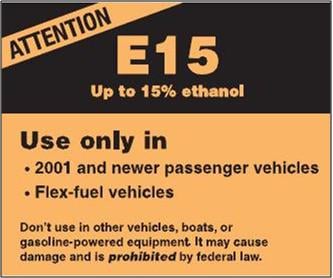President Trump: New Steps Towards An E15 Future
It’s the first half of October, we’ve just gotten past the contentious confirmation hearings for Supreme Court Justice Brett Kavanaugh, and the...

This past year (past two years, really) has been kind of rough on the gasoline budgets of American families, as supply fluctuations and certain world events have triggered a rise in gas prices to historical levels in some areas. The middle of last year (2022) saw the national average for gasoline hit $5.00 a gallon for the first time in history. And while those prices have dropped dramatically (which, to be fair, is exactly what was expected), we also know that this is the time of year when gas prices rise, as we enter into the summer driving season.
For many years, gas prices will rise about 30-40 cents per gallon between March and July. In years when the world petroleum supply isn’t being impacted by wannabee-Romanovs trying to expunge another sovereign country from the world, gas prices always go up around this time because refineries are spending time and resources switching over from winter gas to summer gas production.
The Biden Administration is surely aware of American consumers’ lack of appetite for any more financial surprises. We’ve spent the last couple of years dealing with the aftermath of COVID and its effects on the supply chain and food prices, leading to inflation not seen since the days of the venerable Jimmy Carter. A financially-fatigued public doesn't want to deal with more expensive gasoline on top of that.
On April 28th, the EPA issued an emergency fuel waiver that allows E15 gasoline to be sold in the summer. That waiver went into effect May 1st (happy May Day!).
The fact they had to issue a waiver shows E15 wasn’t allowed to be sold all year round, before. In large parts of the country, terminal operators and gas stations would have to stop selling E15 because of its differing vapor pressure on May 1st and June 1st, respectively.
Vapor pressure is a property of the fuel that governs how quickly it evaporates. If the vapor pressure is higher, it evaporates more easily and quickly. E15 evaporates more easily in warm weather than E10 does, and that creates concerns about evaporative emissions (the emissions from fuel evaporating into the air) affecting air quality. Think about when you're pumping gas and some of it drips on the ground after you're down. Also, count the gas that evaporates initially when you simply remove your gas cap - these are known in the industry as puff emissions. Take all of that, then multiply them by 180,000 gas stations across the country. We're talking at least 2.5 million gallons of gasoline lost in this way. So in many areas of the countries, E15 sales would be cut off before the weather got hot enough for that to increase the existing problem.
Now, the EPA is relaxing those restrictions and allowing E15 to be sold by terminals for at least another month, as their waiver expires at the end of May. It’s anticipated that this move will help ease any coming increases in gas prices, whether from the switch to summer blend gasoline or from supply shortage caused by the Russian War in Ukraine.
You may recall this is not the first time the EPA has tried to do something like this. Back in 2019, then-President Donald Trump made a big announcement in Iowa about changing the rules so that E15 could be sold year-round. While this seemed to be good news for American corn farmers (hence why they announced it in Iowa), we at the Bell blog commented that we thought it was curious for Trump to announce this policy change when Republicans (including Trump himself) had always decried ethanol as just another example of government bureaucrats forcing hippie environment rules on the hard-working American public. Now, Trump was promoting what he had previously said was a bad idea.
What we and others missed was that, in the ensuing months, this rule change to allow the year-round sale of E15 was struck down by a federal court that ruled that the EPA had exceeded its mandate in demanding that change. The Supreme Court then put a final end to that effort on January 10th, 2023 by declining to take up the appeal. So we’ve been operating under the old rules ever since.
But the legal landscape has now changed. The EPA now has new legal abilities, codified by legislation, that gives them the authority to do exactly this kind of thing. And so here we are.
By law, agencies like the EPA can only issue waivers for rules that last less than a month. If the gas price situation is still problematic by the end of May, expect to see the EPA simply issue another waiver to replace the expired one.
Since you’re likely now to see more ethanol in your gas at the pump, you may have more need for an ethanol fuel additive than you did before. With cars, you don’t have to worry about material damage or about water in your tank. If you have small equipment and you keep small amounts of ethanol gas around for use, you do have to worry about those things. But not for your car.
With your driving, you must have to worry about mileage loss, since the amount of ethanol in your gasoline is going up by 50%. So we would recommend you use a good detergent additive that’s optimized for ethanol fuel. It will clean out your engine, make sure your injectors aren’t being unduly affected by deposits, and keep your engine running at the peak performance level it does when it’s at its cleanest.
If you’re asking the question what should I do about E15, that would be the best answer.

It’s the first half of October, we’ve just gotten past the contentious confirmation hearings for Supreme Court Justice Brett Kavanaugh, and the...

This week, Ford and GM announced that they have approved the use of gasoline blends containing up to 15% ethanol for use in their later model cars...

Back in 2007, Marianne Lavelle and Bret Schulte of U.S. News & World Report published an overview of the ethanol situation in the United States ("Is...